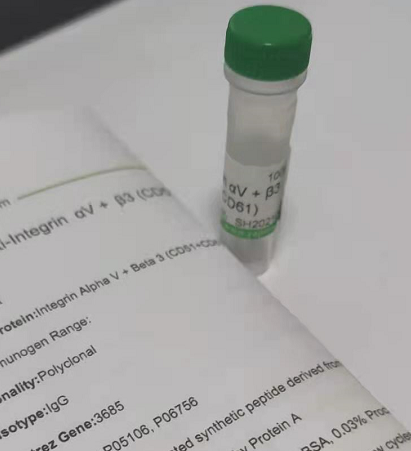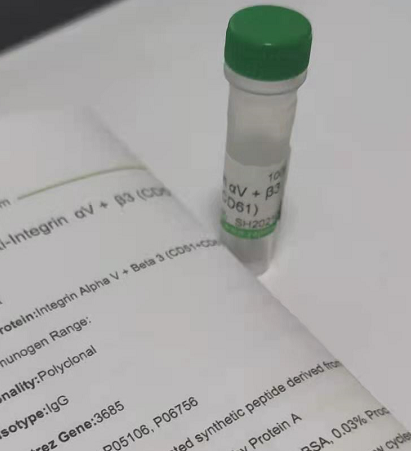| 產(chǎn)品編號(hào) | YS-2776R |
| 英文名稱 | CACNA1C |
| 中文名稱 | L型鈣通道蛋白抗體 |
| 別 名 | alpha-1 polypeptide; cardiac muscle; isoform 1; L type; CAC1C_HUMAN; CACH 2; DHPR alpha 1; VDCC-L alpha; CACH2; CACN 2; CACN2; Calcium channel; Calcium channel cardic dihydropyridine sensitive alpha 1 subunit; Calcium channel L type alpha 1 polypeptide isoform 1 cardiac muscle; Calcium channel voltage dependent L type alpha 1C subunit; CaV1.2; CCHL1A1; DHPR alpha 1 subunit; LQT8; TS; Voltage dependent L type calcium channel alpha 1C subunit; Voltage dependent L type calcium channel subunit alpha 1C; Voltage gated calcium channel alpha subunit Cav1.2; Voltage gated calcium channel subunit alpha Cav1.2; Voltage gated L type calcium channel Cav1.2 alpha 1 subunit, splice variant 10*; Voltage-dependent L-type calcium channel subunit alpha-1C; Voltage-gated calcium channel subunit alpha Cav |
| 抗體來(lái)源 | Rabbit |
| 克隆類型 | Polyclonal |
| 交叉反應(yīng) | (predicted: Human, Mouse, Rat, Dog, Pig, Cow, Horse, Rabbit, ) |
| 產(chǎn)品應(yīng)用 | ELISA=1:1000-5000 IHC-P=1:100-500 (石蠟切片需做抗原修復(fù)) not yet tested in other applications. optimal dilutions/concentrations should be determined by the end user. |
| 理論分子量 | 239kDa |
| 細(xì)胞定位 | 細(xì)胞膜 |
| 性 狀 | Liquid |
| 濃 度 | 1mg/ml |
| 免 疫 原 | KLH conjugated synthetic peptide derived from human CACH2: 351-450/2221 |
| 亞 型 | IgG |
| 純化方法 | affinity purified by Protein A |
| 緩 沖 液 | 0.01M TBS(pH7.4) with 1% BSA, 0.03% Proclin300 and 50% Glycerol. |
| 保存條件 | Shipped at 4℃. Store at -20 °C for one year. Avoid repeated freeze/thaw cycles. |
| 注意事項(xiàng) | This product as supplied is intended for research use only, not for use in human, therapeutic or diagnostic applications. |
| PubMed | PubMed |
| 產(chǎn)品介紹 | The receptor for the 1,4-dihydropyrodine (DHPR) class of Ca2+ channel is most abundant in the transverse tubular membranes of skeletal muscle. DHRP is essential in excitation-contraction (E-C) coupling and has been proposed to have a dual function as a calcium channel and voltage sensor. Skeletal muscle DHRP consists of four subunits: alpha1 (170kDa); alpha2 (175kDa non-reduced, 150kDa reduced); beta (52kDa) and gamma (32kDa). Function: Voltage-sensitive calcium channels (VSCC) mediate the entry of calcium ions into excitable cells and are also involved in a variety of calcium-dependent processes, including muscle contraction, hormone or neurotransmitter release, gene expression, cell motility, cell division and cell death. The isoform alpha-1C gives rise to L-type calcium currents. Long-lasting (L-type) calcium channels belong to the 'high-voltage activated' (HVA) group. They are blocked by dihydropyridines (DHP), phenylalkylamines, benzothiazepines, and by omega-agatoxin-IIIA (omega-Aga-IIIA). They are however insensitive to omega-conotoxin-GVIA (omega-CTx-GVIA) and omega-agatoxin-IVA (omega-Aga-IVA). Calcium channels containing the alpha-1C subunit play an important role in excitation-contraction coupling in the heart. The various isoforms display marked differences in the sensitivity to DHP compounds. Binding of calmodulin or CABP1 at the same regulatory sites results in an opposit effects on the channel function. Subunit: Voltage-dependent calcium channels are multisubunit complexes, consisting of alpha-1, alpha-2, beta and delta subunits in a 1:1:1:1 ratio. The channel activity is directed by the pore-forming and voltage-sensitive alpha-1 subunit. In many cases, this subunit is sufficient to generate voltage-sensitive calcium channel activity. The auxiliary subunits beta and alpha-2/delta linked by a disulfide bridge regulate the channel activity. Interacts with CACNA2D4. Interacts (via the N-terminus and the C-terminal C and IQ motifs) with CABP1. The binding via the C motif is calcium independent whereas the binding via IQ requires the presence of calcium and is mutually exclusive with calmodulin binding. The binding to the cytoplasmic N-terminal domain is calcium independent but is essential for the channel modulation. Interacts (via C-terminal CDB motif) with CABP5; in a calcium-dependent manner (By similarity). Subcellular Location: Membrane. Cell membrane. The interaction between RRAD and CACNB2 regulates its trafficking to the cell membrane. Tissue Specificity: Expressed in brain, heart, jejunum, ovary, pancreatic beta-cells and vascular smooth muscle. Overall expression is reduced in atherosclerotic vascular smooth muscle. Post-translational modifications: Phosphorylation by PKA activates the channel. DISEASE: Defects in CACNA1C are the cause of Timothy syndrome (TS) [MIM:601005]. TS is a disorder characterized by multiorgan dysfunction including lethal arrhythmias, webbing of fingers and toes, congenital heart disease, immune deficiency, intermittent hypoglycemia, cognitive abnormalities and autism. Defects in CACNA1C are the cause of Brugada syndrome type 3 (BRGDA3) [MIM:611875]. A heart disease characterized by the association of Brugada syndrome with shortened QT intervals. Brugada syndrome is a tachyarrhythmia characterized by right bundle branch block and ST segment elevation on an electrocardiogram (ECG). It can cause the ventricles to beat so fast that the blood is prevented from circulating efficiently in the body. When this situation occurs (called ventricular fibrillation), the individual will faint and may die in a few minutes if the heart is not reset. Similarity: Belongs to the calcium channel alpha-1 subunit (TC 1.A.1.11) family. CACNA1C subfamily. |
我要詢價(jià)
*聯(lián)系方式:
(可以是QQ、MSN、電子郵箱、電話等,您的聯(lián)系方式不會(huì)被公開)
*內(nèi)容:









